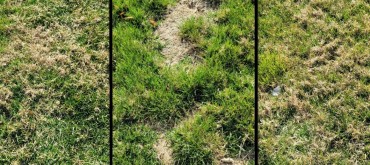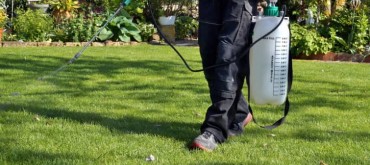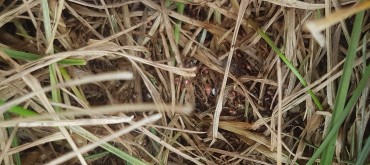Spring frost is a common issue for those trying to get an early start on their garden here in Southern Ontario, especially during the months of April and early May. This happens when night time temperatures dip close to, or below zero. When it comes to your lawn, the frost itself usually does not harm it; however, trekking across frosty grass can. The good news is that spring frost melts faster, as the sun rises earlier and temperatures rise quicker, so it is unlikely that you will walk across a frosty lawn on a spring morning.
If you are a very early riser and you do have frost, ensure to avoid any traffic on your lawn as you may crush the shoots of each blade causing damage. Normally, the blades of turf grass are elastic and are not damaged by regular traffic. During frost, the elasticity is lost resulting in ruptured leaf cells and fractured turf blades. Increased traffic will impede on your lawn’s health and overtime unattractive brown patches may occur. Also, mowing during frost or below 2.5” can expose your turf to the harsh weather elements. Having your lawn cut too short encourages dryness and evaporation, which can lead to bacterial development and hinder turf growth.
In regards to the rest of your landscape and planting a bit of colour in your gardens with annuals, we always suggest doing your planting after the May long weekend, at which point historically, night temperatures do not typically fall below zero. Frost sensitive annuals and even potted tropical plants that you may want to move outdoors, could potentially incur some damage if planted to early. Now, if you have already planted some susceptible plants and a light frost is in the forecast, you can usually protect them with a light covering like an old sheet for the overnight period or simply move the plant into a garage or shed, until the threat passes. A spring frost is usually quite different from fall frost, as it is typically followed by a warming trend, as soon as the morning arrives reducing the long term risk.
Insects, weeds, diseases and plants all follow a growing schedule based on these temperature and daylight pattern changes. To be safe, it is always advisable to wait until the temperature moderates to start any planting. If you have overseeded your lawn, there is no need to worry, as the seed will wait for the right weather conditions to germinate. This may just take a while, as seeds too, need warmer weather to grow.





